Tree Report Card 2016
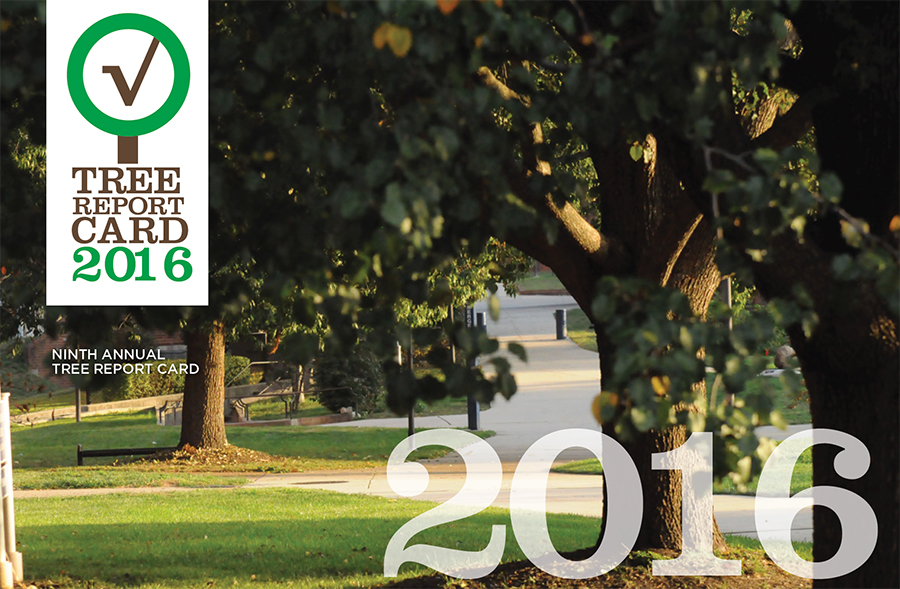
Casey Trees is a Washington, D.C.-based nonprofit committed to restoring, enhancing and protecting the tree canopy of our nation’s capital. We pursue our mission through community action, education, and research.
Casey Trees’ Tree Report Card measures the quantity and condition of D.C.’s trees and the collective efforts of all groups and individuals working to achieve the District’s 40 percent tree canopy goal. It is based on data from various sources, including federal, state and private groups.
Overall Grade: A-

Executive Summary
I’m extraordinarily pleased to convey, in this our 9th annual Tree Report Card, an increase in D.C.’s tree canopy from 36 to 38 percent, bringing us within 2 points of the city’s 40 percent goal. While two percent seems small, for D.C. it represents area about the size of 700 football fields—700 football fields of leaves—approximately twice the size of the National Mall.
Of all the requirements necessary to achieve this milestone, one stands out—partnership—the theme this year’s Tree Report Card. I want to especially thank the D.C. Department of Transportation’s Urban Forestry Administration; the Department of Energy and the Environment; and; the D.C. City Council and Mayor Bowser for all their support. And of course, we could never have accomplished all we have without our incredible staff, Board of Directors, and our extended family of over 2500 volunteers, members and donors.
This year’s canopy analysis confirms that the 80,000 trees planted city-wide over the past 15 years are starting to get big, and just as important, thousands of large trees protected by the city’s tree laws keep growing. The young trees in particular—which will live for many more decades—along with thousands of others soon to be planted, will help us inch our way toward the city’s 40% canopy goal—perhaps ahead of our 2032 deadline…
I encourage you to become part of this incredible success story unfolding in our city. Visit Casey Trees’ website and sign up for a tree planting event, testify in support of trees at a city council hearing, or water a newly-planted tree on your block. No matter how you engage with us at Casey Trees you’ll have a fun and rewarding experience.
Thank you for your continued support of our efforts. I look forward to seeing you soon!


Spotlight: Partnership
When Casey Trees began the city was dealing with a crisis—years of neglect resulted in thousands of missing street trees and thousands more standing dead. While the problem was evident its magnitude was unclear—D.C.’s tree inventory was woefully out of date. We therefore decided, in 2002, to undertake a comprehensive inventory to address the immediate problem and help plan for the future. That is why the 2015 Tree Report Card, our eighth annual, highlights parks. Parks provide the necessary plantable space and important neighborhood amenities deserving of our collective attention and investment.
We could have done the inventory via contractors, but we rejected this approach in favor of one that would help us build relationships for the future—launching D.C.’s first-ever volunteer citywide street tree inventory. Over 500 volunteers fanned out across the city, identifying, counting and assessing the health of trees—and equally important—introducing thousands of residents to Casey Trees and our mission.
The work was hard but the rewards priceless. Through the many interactions between volunteers and residents, a committed group of tree advocates emerged. This led to among other things, the passage of D.C.’s first tree protection legislation—the Urban Forest Preservation Act of 2002—which was amended this past year through the Tree Canopy Protection Amendment Act of 2016.
Since those early days, our partnerships have expanded significantly to include government, corporate and other non-profit supporters. Looking back at the momentum created by all these efforts it’s easy to understand why D.C.’s canopy has increased from 36 to 38 percent, and the future looks equally bright. This coming year we’re focusing more effort with our District partners to plant trees on D.C.’s parks. We recently formed a city-wide volunteer pruning corps. A game-changing partnership with the Urban Forestry Administration to give young trees the care they need early on to ensure they will endure for decades.
But here’s the most important message: The partner we need most now is you. While government and non-profits can work together to achieve great things, it is the citizens that truly drive our initiative to re-tree our beautiful city. Join us, meet our supporters, become a supporter yourself—plant a tree and watch it grow.
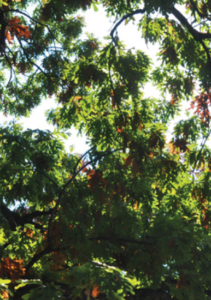
Metrics Explained
The tree report card rates Washington, D.C.’s urban forest based on four metrics: Tree Coverage, Tree Health, Tree Planting and Tree Protection. Each metric is assigned a numeric score and grade, and an overall grade is determined by averaging the individual metrics. Details on grading is explained in the appendix below.
Tree Coverage: A
The District’s current canopy percent is 38 resulting in an A grade. Note: The city conducted a new aerial canopy assessment, which Casey Trees independently verified in 2016.
Previous Grades for Tree Coverage:
A- (2012–2015)
B+ (2009–2011)
B (2008)
Tree Health: B-
Tree Health measures tree condition, species, size, and type. This metric helps us understand how resilient the District’s trees are in terms of potential threats due to pests and disease, and helps predict the urban forest’s longevity and future composition.
Every five years, data is collected from 201 sample sites across the District. Results from 2015’s re-survey did not show any significant differences from the 2010 survey—with 83 percent of D.C.’s 2.4 million trees in good to excellent condition, resulting in a B- grade for Tree Health.
Previous Grades for Tree Health:
B- (2009–2015)
A+ (2008)

Tree Planting: A+
Every year for the next 16 years, at least 10,648 trees must be planted in order for City to achieve its 40 percent canopy goal by 2032. In 2016, 14,137 trees were collectively planted on private and public property resulting in an A+ Grade for Tree Planting—the most trees ever planted in any given year.
Previous Grades for Tree Planting:
A+ (2010–2015)
C- (2009)
B (2008)
Tree Protection: B
Protecting large, healthy trees and ensuring their replacement when they are removed remains the greatest challenge to achieving the city’s 40 percent canopy goal.
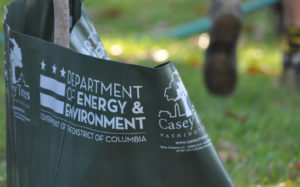
Submetric 1: Is the Urban Forestry Protection Act (UFPA) discouraging the removal of healthy special trees?
In 2002, the UFPA set the baseline value to remove a healthy special tree at $35 per inch. With the passage of the Tree Canopy Protection Amendment Act of 2016 (TCPAA), that fee was changed to $55 per inch, setting a new baseline that slightly exceeds what the original fee would have been if simply adjusted for inflation to 2016 dollars. In addition, the TCPAA permanently protects all healthy, large trees over 100” in circumference or greater—also known as “Heritage Trees,” a significant protection not included in the original UFPA.
Given these milestones in tree protections recommended by Casey Trees in earlier report cards and the new baselines they establish, this sub-metric receives an “A+” grade.
Submetric 2: Are replacement trees effectively replacing canopy removed?
Periodic assessments are necessary to determine if replacement trees are replenishing canopy that is lost when Special Trees are removed. For years we assigned an “F” grade to this sub-metric because the city did not conduct assessments to determine if trees planted with Tree Fund dollars were surviving, but the tide has turned. With the passage of the TCPAA, the city is now required to conduct these checks, and a protocol is being put into place.
While there is currently no data to review to determine effectiveness, we are assigning this sub-metric a “C” grade in this reporting year due to the tremendous progress that has been made on the legislative front. In addition, given the increase in canopy from 36 to 38 percent, we have a convincing proxy that replacement trees are indeed surviving to add more tree canopy over time. Next year we will work with the city to ensure a plan is put in place to provide a direct assessment of this metric for future years.
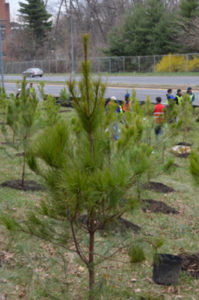
Submetric 3: Is the Tree Fund being administered properly?
The UFPA requires that the District use the Tree Fund money—funds collected from fines and fees—to plant trees, ensuring that the canopy removed is being replaced over time. An examination of the last fiscal year 2015 Tree Fund receipts and disbursements showed that these monies were indeed used for tree replanting, resulting in a grade of A+.
Averaging these three sub-metrics results in a final Tree Protection Grade of B.
Previous Grades for Tree Protection:
F (2014–2015)
D- (2013)
F (2012)
I* (2011)
F (2010)
C+ (2009)
C (2008)
*I=incomplete
Summary: A-
Casey Trees’ Tree Report Card measures the collective efforts of many groups and individuals working to achieve the District’s 40 percent canopy goal. Based on the grades for Tree Coverage, Tree Health, Tree Planting, and Tree Protection, DC’s combined 2016 grade is A-.
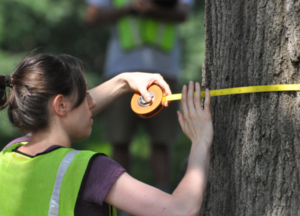
While the increase in canopy from 36 to 38 percent is the most encouraging news in this year’s Tree Report Card, the passage of the Tree Canopy Protection Amendment Act is a close second. Laws produce a foundation for sustained, long-term progress, and there are few jurisdictions with tree protection and replacement laws as robust as those we have fought for here in the District of Columbia. Just as important, there are even fewer jurisdictions that have the commitment that D.C. shows through their Urban Forestry Administration to ensure those tree protection and replacement laws are being adhered to
As this, our 9th Edition of the Tree Report Card shows, it has been a banner year for the trees of the District of Columbia. We beat the odds and unlike any major city in the U.S., we are seeing the clear advancement of the tree canopy goal slowly but surely due to all our collective hard work. We are humbled by the commitment of our partners, in particular, our intrepid volunteers who have made all these achievements a reality!
Recommendations

It is truly a milestone to first report that our recommendation from multiple prior years— passage of the provisions in the Tree Canopy Protection Amendment Act became the law of the District in this reporting year. But so long as there is more canopy to grow, we cannot let up. We encourage Mayor Bowser to:
- Adopt a 50% tree canopy goal for all D.C. Parks
- Increase tree plantings on city-owned properties including schools, rights of-ways, parks and other lands
- Launch an inventory system to determine the mortality rates of trees planted with Tree Fund dollars to meet the requirements of the new Tree Canopy Protection Act of 2016
- Finalize development and launch of the Citizen Forester Pruner Corps program to give newly planted trees a long, healthy life with reduced maintenance costs
- Expand the current tree and slope overlay protection district to other neighborhoods as appropriate to safeguard more trees
- Place conservation easements on city-owned greenspaces to ensure they remain green for the continued benefit of future generations of Washingtonians
Acknowledgements
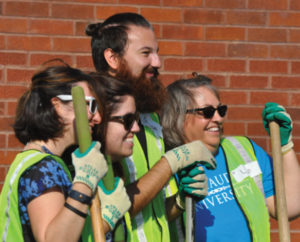
Casey Trees would like to thank the following cooperators for planting, caring and protecting trees in the District as well as sharing their data to track the collective efforts which have been compiled and published in this report:
Bowser Administration and in particular:
- Department of Transportation — Urban Forestry Administration
- Department of General Services
- Department of Parks & Recreation
- Department of Energy & the Environment
- Office of Planning
Anacostia Waterfront Trust
Anacostia Watershed Society
Armed Forces Retirement Home
The American University
The Catholic University of America
D.C. Environmental Network
D.C. Water
Federal City Council
Gallaudet University
George Washington University
Groundwork Anacostia
Pepco Holdings Inc.
Restore Mass Ave
Rock Creek Conservancy
Sustainable DC partners
Trees for Capitol Hill
Trees for Georgetown
U.S. General Services Administration
U.S. National Arboretum
U.S. National Park Service
Washington Parks and People
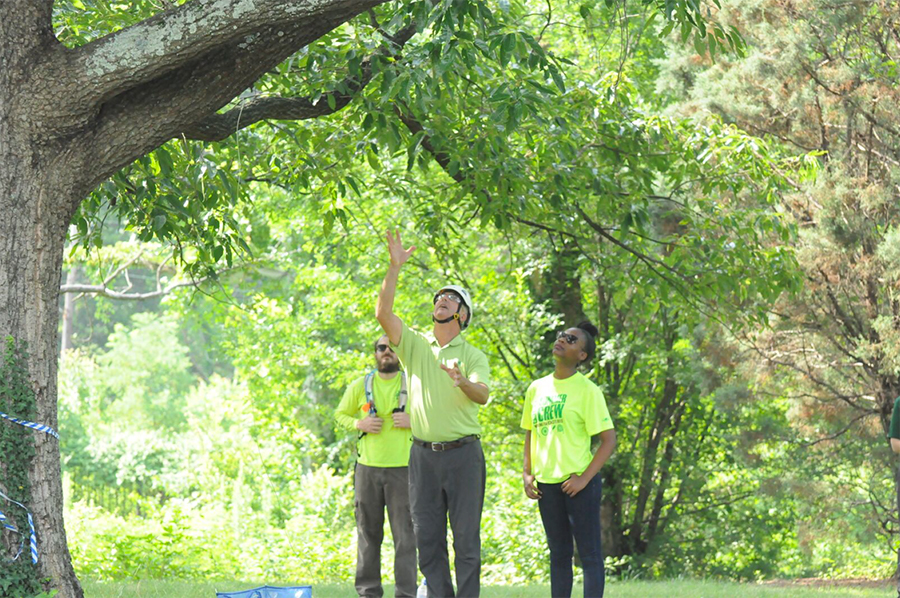
Appendix
Tree Coverage is a measure of a tree’s crown when viewed from above and is the way we track the progress that the District makes towards its 40 percent tree canopy by 2032 goal.
Tree Health measures a tree condition, species, size and type. This metric helps us understand how resilient the District’s trees are in terms of potential threats due to pests and diseases as well as predict its longevity and future composition.
Tree Planting is a count of all the trees planted in a given year, compared to the total number of trees that must be planted per year to achieve the City’s 40 percent canopy goal by 2032.
Tree Protection assesses the impact of the Urban Forestry Preservation Act of 2002—a law intended to slow the removal of healthy trees 55 inches in circumference or greater and ensure their replacement when they are cut down. Under the Act, removal of a Special Tree requires a fee, and the proceeds are used for replacement plantings.
Three sub-metrics are used to assess the impact of the law:
- Are UFPA’s fines and fees keeping pace with inflation?
- Are the replacement trees that are planted surviving at a rate that will replace the trees that were cut down?
- Are the fees and fines generated by the law being used for replacement tree planting?

Retrospective
- 2016 Tree Report Card: PDF (Overall grade A-)
- 2015 Tree Report Card: PDF (Overall grade B-)
- 2014 Tree Report Card: PDF (Overall grade B-)
- 2013 Tree Report Card: PDF (Overall grade B-)
- 2012 Tree Report Card: PDF (Overall grade B-)
- 2011 Tree Report Card: PDF (Overall grade Incomplete)
- 2010 Tree Report Card: PDF (Overall grade C)
- 2009 Tree Report Card: PDF (Overall grade B-)
- 2008 Tree Report Card: PDF (Overall grade B)